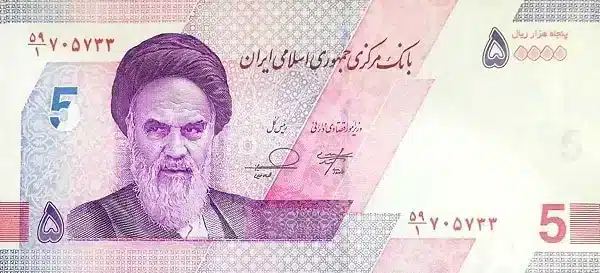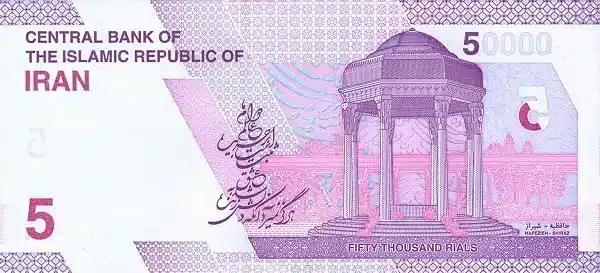Uncirculated vs. Circulated Banknotes — What's the Difference?
At Collectible Money, we often get asked: "Should I collect uncirculated or circulated banknotes?" The answer depends on your goals, budget, and what you value most in your collection.
Understanding the difference between these conditions is crucial for every currency collector and investor. Let's break down what each term means and when to choose one over the other.
Quick Definition
Uncirculated (UNC): Banknotes that have never been used in commerce—perfect condition straight from the central bank.
Circulated: Notes that have been used in daily transactions, showing varying degrees of wear from handling.
What Are Uncirculated Banknotes?
Uncirculated notes represent the highest grade of paper currency condition. They've never touched public hands and come with specific characteristics:
- Perfectly crisp – No folds, creases, or bends
- Original brightness – Colors are vibrant and paper is pristine
- Sharp corners – All corners are perfectly square and unworn
- No soiling – Absolutely clean without any stains or discoloration
- Full embossing – Raised printing (intaglio) is completely intact
- Original bank freshness – Maintains the exact state as when issued

Circulated Note: Shows typical handling wear

Uncirculated Note: Perfect, crisp condition
What Are Circulated Banknotes?
Circulated notes have seen real-world use. Their condition can range from "About Uncirculated" (almost perfect) to "Heavily Circulated" (significant wear):
- Light handling – May have one or two light folds
- Corner wear – Corners may be slightly rounded
- Color fading – Some loss of original brightness
- Minor soiling – Light handling marks or discolorations
- History – Each note carries the story of its journey through economy
- Character – Develops unique patina and personality
Complete Banknote Grading System
Side-by-Side Comparison
| Feature | Uncirculated (UNC) | Circulated |
|---|---|---|
| Condition | Perfect, pristine | Varies from excellent to heavily worn |
| Price | Premium (higher cost) | Affordable to moderate |
| Availability | Limited (especially for older issues) | Widely available |
| Investment Potential | Highest appreciation potential | Slower appreciation |
| Historical Character | Factory fresh, no history | Rich history and patina |
| Best For | Serious collectors, investors | Beginner collectors, history enthusiasts |
When to Choose Uncirculated:
- Building a premium collection
- Long-term investment purposes
- Modern currency (easier to find in UNC)
- When perfection matters most
- Gift-giving or special occasions
- Specimen-quality displays
When Circulated Makes Sense:
- Limited budget
- Historical interest in used currency
- Older, rare issues (where UNC is unavailable)
- Beginner collectors learning the hobby
- When you appreciate the "story" behind the note
- Educational or teaching collections
Advanced Preservation and Storage Guide
For Uncirculated Notes:
- Currency sleeves or Mylar holders – Acid-free protection
- Cool, dry environments – 40-50% humidity ideal
- Cotton gloves – Always handle with care
- UV-protected storage – Avoid direct sunlight
- Archival-quality albums – For long-term preservation
- Climate control – Stable temperature and humidity
For Circulated Notes:
- PVC-free storage – Avoid plasticizers that damage paper
- Protect from further damage – Prevent additional folds or tears
- Document historical significance – Note any special provenance
- Gentle cleaning only – Never attempt to restore or clean aggressively
- Proper labeling – Record grade and any unique features
Storage Materials to Avoid:
- PVC plastics – Cause chemical damage over time
- Rubber bands – Can stick to and damage surfaces
- Paper clips – Leave permanent impressions
- Adhesive tapes – Cause irreversible damage
- Newspaper storage – Acidic paper causes deterioration
Investment Perspective: Long-Term Value
While uncirculated notes generally offer better investment returns, well-preserved circulated notes of rare or historical issues can also appreciate significantly. The key factors are:
- Rarity – How many survive in any condition?
- Demand – Collector interest in the specific issue
- Historical significance – Important events or periods
- Condition for age – How well it's preserved given its age
- Market trends – Current collector preferences
- Provenance – Documented history and previous ownership
How to Start Your Banknote Collection
Step 1: Define Your Focus
Decide what interests you most: specific countries, time periods, denominations, or themes.
Step 2: Set a Budget
Determine how much you want to invest and stick to it. Remember, condition affects price significantly.
Step 3: Choose Your Condition Preference
Decide whether you prefer pristine UNC notes or historical circulated examples.
Step 4: Source from Reputable Dealers
Buy from trusted sources like Collectible Money with authenticity guarantees.
Step 5: Invest in Proper Storage
Protect your investment with appropriate holders and storage solutions.
Step 6: Document Your Collection
Keep records of purchases, grades, and any historical information.
Step 7: Continue Learning
Stay informed about market trends and new discoveries in numismatics.
Our Recommendation at Collectible Money
We believe both uncirculated and circulated notes have their place in a well-rounded collection. For modern currency, uncirculated specimens offer the best long-term value. For historical pieces, a well-preserved circulated note can be just as desirable—and often more affordable.
The most important factor is always authenticity—whether you choose UNC or circulated, buy from trusted sources that guarantee genuineness and accurate grading.
Consider starting with a mix: UNC notes for modern issues and well-preserved circulated notes for older, historical currency. This approach gives you the best of both worlds—pristine modern specimens and affordable historical pieces with character.
Ready to Start or Expand Your Collection?
Whether you're beginning your numismatic journey or adding to an established collection, we're here to help. Browse our carefully curated selection of both uncirculated and circulated banknotes, all guaranteed authentic and accurately graded.
Browse All BanknotesHave questions about condition or need personalized advice? Our numismatic experts are always happy to help you choose the right notes for your collection goals and budget. Contact us for personalized guidance!
Professional Grading Services
For valuable notes, consider professional grading services like PMG (Paper Money Guarantee) or PCGS (Professional Coin Grading Service). These third-party services provide:
- Expert authentication and grading
- Protective, tamper-evident holders
- Enhanced resale value and marketability
- Professional population data
We offer both raw and professionally graded notes to suit every collector's needs and preferences.
